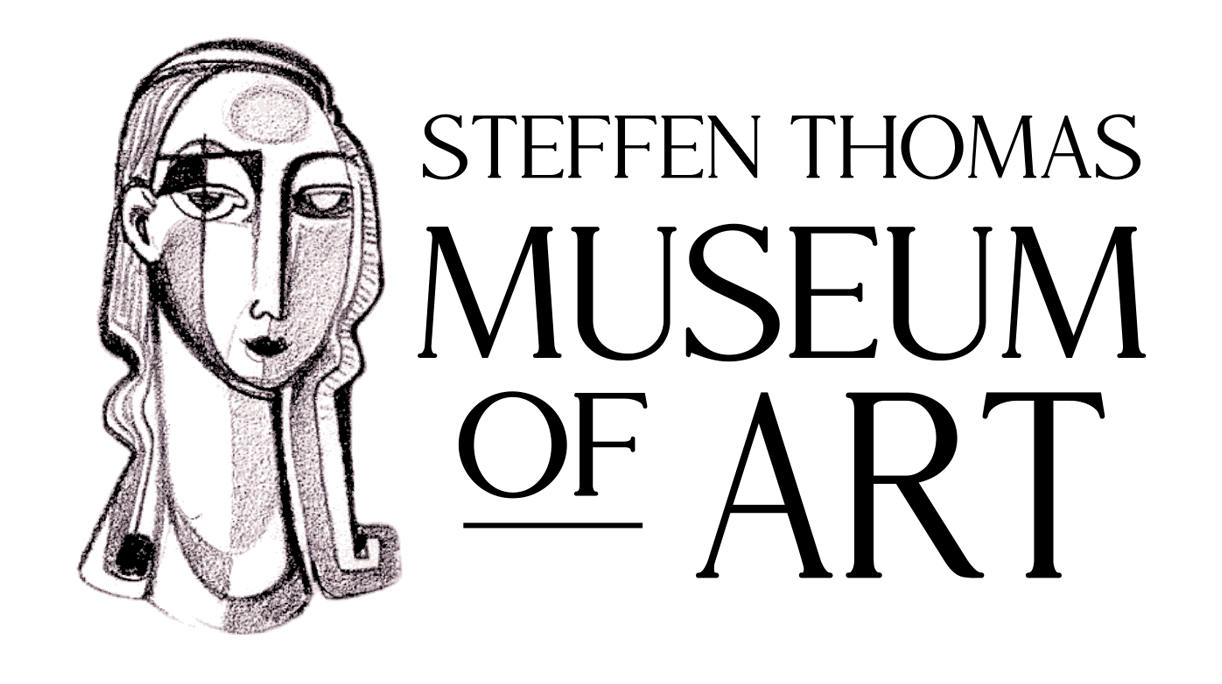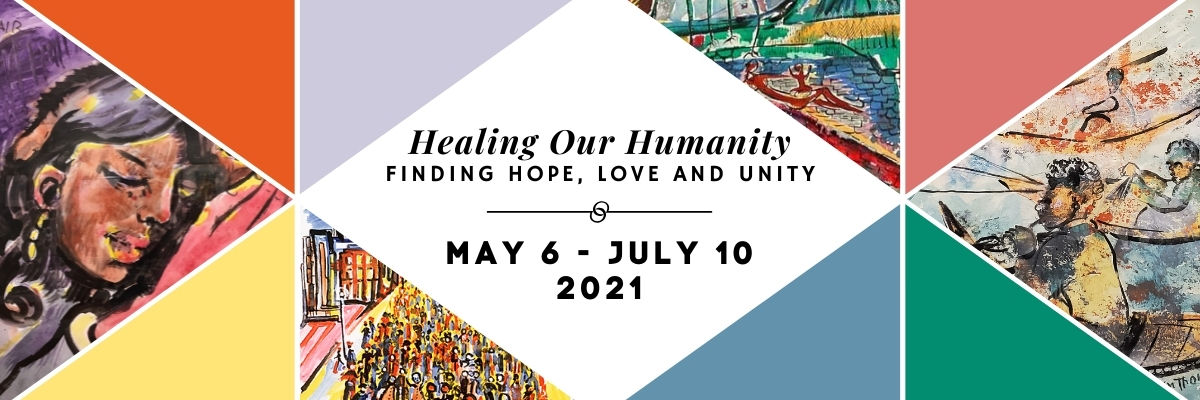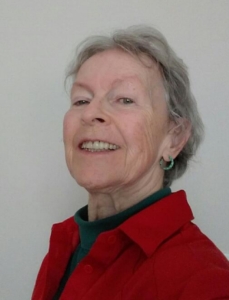Healing Our Humanity: Finding Hope, Love and Unity
A Juried Exhibition at the Steffen Thomas Museum of Art
May 6 – July 10, 2021
The Steffen Thomas Museum has invited artists of all media and genres to its annual juried exhibition. This show compiles a broad range of perspectives that tell the dynamic story of our current social climate and the path forward. We are proud to feature this group of artists whose work inspires communication, healing, hope, love and unity.
This year’s exhibition is Healing our Humanity: Finding Hope, Love and Unity, exemplified by the following quote by our namesake, Steffen Thomas.
“The most important aspect of art is communication. I use universal themes and I try to communicate with all persons. Art is unique in that a translation is not necessary, and a genuine work of art can be more powerful than a dozen ambassadors. If we can exchange our ideas and our feelings through art, I think it will be a little more difficult for us to go shooting and dropping bombs on each other. Perhaps I am an idealist, but this is what I believe and this is the purpose of my work.”
– Steffen Thomas, November, 1965 from “The Turbulent World of Steffen Thomas” by Richard Ainsworth as published in ‘ATLANTA’, the Official Publication of the Atlanta Chamber of Commerce.
Meet the Artists

Artwork in this image (left to right): Not Guns but Roses by Margaret C. Brown, Obsolescence I – Deus Ex Machina by Andrae Green, Angels Among Us by Nnamdi Okonkwo, Ogolo by Oliver Enwonwu, and Perilous Times I by Zerric Clinton
To see this image in its full size, right click on it (or tap image and hold down on mobile) and then “Open Image in New Tab.”
|
|
|
 |
Andrae Green | PainterArtist Statement:I am a Jamaican living in the USA. But what does it mean to be Jamaican? For me, this means that I am a hybrid. Partly old fully new. I could never have existed as I am without being in the New World. My identity is a hybridization of both European and West African cultures. A little of Europe a little of African and a lot in between. Cuban writer and scholar Antonio Benitez Rojo said it best when he said, “Caribbeanness is a system full of noise and opacity, a nonlinear and unpredictable system. In short a chaotic system beyond the total reach of any specific kind of knowledge or interpretation of the world.” It is this chaotic order that feeds into the vitality of Jamaican or Caribbean life and makes it potent and gives it its otherness. With the act of painting, I can merge these diverging worlds unto the canvas and give order to their chaos. I drag, push and pull the brush along the surface of the painting almost as if I am in an active trance. The figures on my canvas come to life but not as how you expect. On my canvas figures dance, struggle and play while being connected and disconnected from themselves. These figures speak about the current age that I live in. A world where representation and reality can be interchanged and physicality can be fleeting. History, identity, and fantasy are interchangeable and can be reinvented. My creations carry the same disjointed collaged patchwork that forms my identity, my hybridization. The figures and narratives that they are involved speaks of the slippages that occur when the self and the space that it occupied is fractured and then put back together. Learn more about Andrae Green. |
 |
Nnamdi Okonkwo | SculptorArtist Statement:The forms in my sculpture are simplified and stylized to express better my thoughts and ideas which are embodied in fluid lines and simple shapes. It is a mode of expression that comes naturally to me, and it is straight to the point and devoid of pretension. Stylization also offers a greater avenue for the expression of universal themes and emotions. This allows me to broaden the scope of expression by transcending mere literal representation of the figure, provoking different thoughts and ideas, and giving the viewer an opportunity for introspection and contemplation. One of the few guidelines that I follow is best exemplified in a statement made by Michelangelo which states: “Measurement should be in the eyes and not in the hands, for while the hand measures; it is the eye that judges.” My proportions, therefore, are not based on any rigid principle, but rather are based on a personal ideal of beauty and balance. I want my figures to be more symbolic rather than literal copies of the human form. Thus in sculpture, my figures, instead of being confined to a model become a symbol of humanity. I also simplify my shapes to avoid distractions of any extraneous detail, which does not add to the beauty of the whole design. Attitudes, gestures, and overall composition are of primary importance to me. Detail, of course, has its place in sculpture, but I find that my ideal of beauty is more easily attained with simple lines and shapes, which convey my thoughts and ideas unshackled by detail. Further, the big, rotund forms symbolize abundant life. It is an outward manifestation of a largeness of soul. Also prevalent in my sculpture is the theme of womanhood. I am captivated by the noble characteristics, which include: empathy, love, resilience, strength, etc., that are embodied in womanhood. The women that are closest to me, my wife, and my mother have influenced me greatly and are exemplars of these noble attributes. In my indigenous culture as well as in many cultures, womanhood is venerated. There is an understanding that women share, even in a small way, with the creator, the sacred act of giving life. Perhaps this understanding of the dignity of womanhood inspires me to seek to honor women in my sculpture. I hope all will find in my work a source of inspiration to transcend the turmoil and unevenness of life. I also hope that my sculptures will be capable of eliciting strong emotional responses from the viewer regardless of his or her background or race. Learn more about Nnamdi OkonkwoArtist Spotlight |
Artist Spotlights
Every week on STMA’s Facebook and Instagram pages, we will be highlighting each artist featured in Healing Our Humanity: Finding Hope, Love and Unity. We proudly showcase these unique artists and their work by giving viewers a closer look into their studio practice and personal motivations for making art. STMA’s Project Coordinator, Lilly McEachern, sits down with each artist for an exclusive interview to talk abut artistic practice, philosophy, and the themes of unity and healing.
Find the full YouTube playlist below. To see a list of all videos in the series, go to the top right corner of the video player and click the symbol with three lines and a ‘play’ triangle.
Steffen Thomas and George Washington Carver

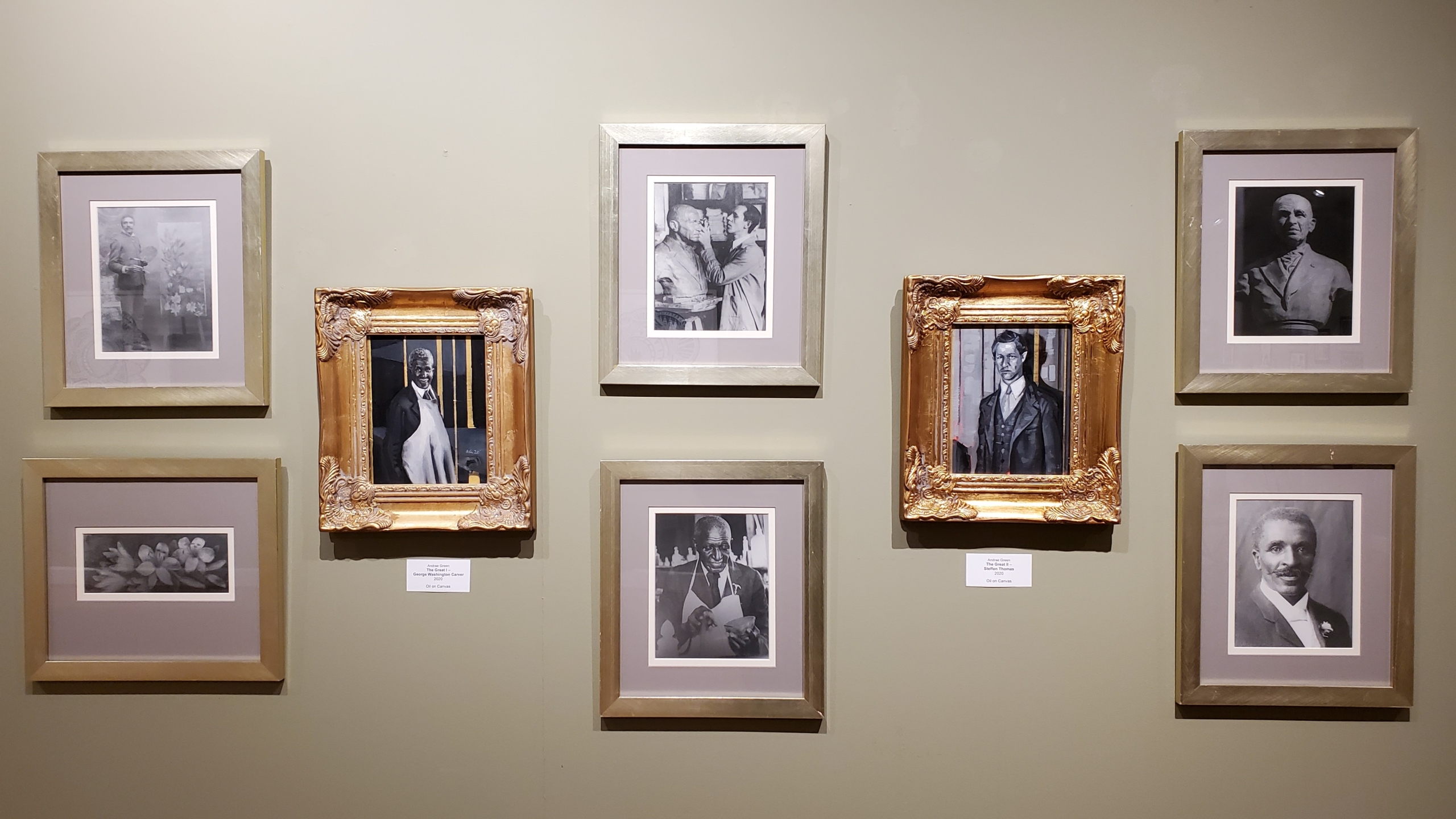
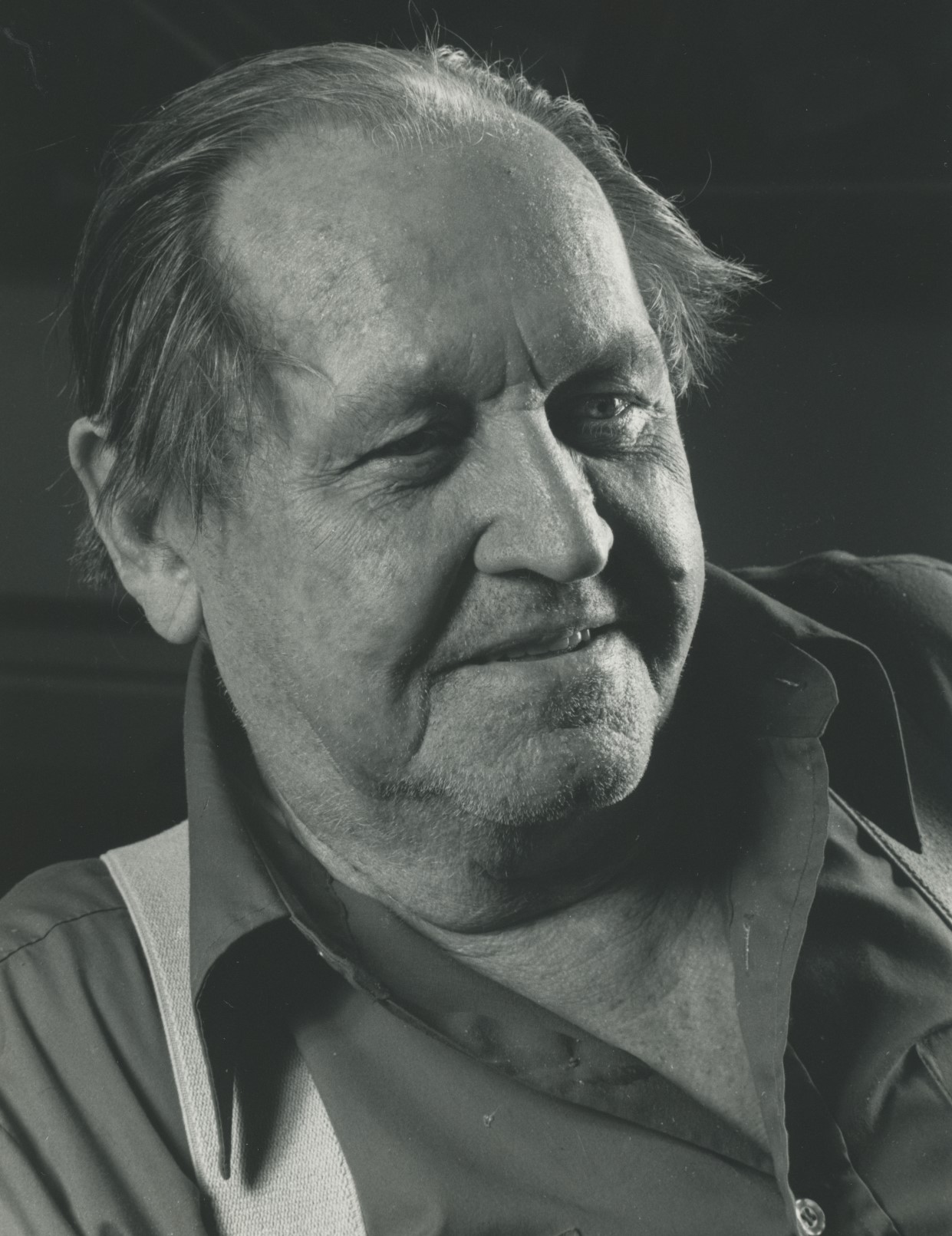
In this exhibition, you will find Andrae Green’s portraits of George Washington Carver and Steffen Thomas, surrounded by photographs from the Museum’s collection that highlight the close friendship between the two. You probably know Dr. Carver best for his achievements in botany and agricultural science, but did you know he was also a musician, poet, painter and potter?
In 1936, Steffen was commissioned by Tuskegee University to sculpt a bust of Dr. Carver. What followed was years of friendship, corresponding through letters and occasional visits to his apartment dormitory on the University’ campus. In 1947, four years after Carver’s death, Steffen Thomas wrote a short memoir, “My Experience with Dr. George Washington Carver,” which begins like this:
“Ever since 1936 I bore this story, or impression, of a great person in my mind, hoping that someday I would learn English well enough to write it down. I am sure that there are many interesting writings about this great man-some excerpts of which I have read-but I have not read about him the way I know him personally.”
You can read the full memoir below, and listen to Andrae Green’s comments during his studio tour in our Artist Spotlight Series.
